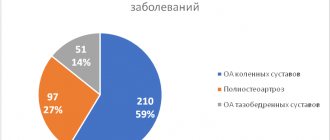Fentanyl
Fentanyl is a potent synthetic opioid analgesic widely used in anesthesiology, which is 100 times more potent than morphine.
Fentanyl is prescribed in preparation for operations on the abdominal organs, after operations and to relieve pain in cancer.
Fentanyl is highly addictive and its use is subject to strict controls.
Signs of fentanyl use:
- high spirits, causeless laughter
- constricted pupils that do not respond to light
- speech disorders, a person has difficulty pronouncing words
- slow breathing
- severe fatigue, drowsiness, lethargy
- apathy
- decreased or lack of appetite
- injection marks
In the first 3-4 hours after taking fentanyl, a person experiences joy, causeless cheerfulness. And as the effect of the drug weakens, depressed mood, depression and apathy occur, and psychosis is possible.
Fentanyl addiction
If fentanyl is used strictly as directed, there is little chance of developing dependence unless the patient requires ongoing pain relief. Initially, tolerance to the substance appears, the analgesic effect becomes weaker, and its effect ceases faster.
In cases of non-medical use, addiction develops very quickly, addiction to the drug occurs after 3-4 doses. To enhance the effect, the dosage is constantly increased, which often leads to fatal consequences.
Withdrawal of the drug causes a severe withdrawal syndrome with severe, ongoing pain that can lead a person to suicide.
Fentanyl addiction often results in death, which occurs from an overdose or from irreversible damage to internal organs.
Consequences of fentanyl abuse:
- disruption of the central nervous system
- respiratory system disorders
- disturbances in the gastrointestinal tract
- infertility
- impotence
- cirrhosis of the liver
- stomach ulcer
- depression
- constant severe pain
- thoughts of suicide
Pain syndrome
Treatment of acute pain
- Mild pain - non-narcotic analgesics
For moderate pain, a combination of a non-narcotic analgesic and a mild opioid (codeine) or Tramadol (a central analgesic) is prescribed.
Non-narcotic analgesics include Paracetamol, Ketanov. They have the effect of reducing pain perception due to inhibition of COX, increasing the threshold for excitation of the pain center, which is located in the thalamus. The anti-inflammatory effect is less pronounced.
In practice, Tramadol is prescribed to cancer patients once the diagnosis has been established and can be taken strictly according to prescription. The mechanism of action is associated with norepinephrine and serotonin receptors. In moderate doses it does not depress breathing.
- Severe pain is relieved with a combination of a potent analgesic and a non-narcotic drug (For example, tumor metastasis to bone tissue).
An example of a combination is the combination of Tramadol and Paracetamol.
It is important to note that only a doctor can combine and prescribe treatment; at home it is impossible to predict the side effects that develop in a person when taking these drugs without specialized help.
- If the pain syndrome is unbearable (oncological disease), then specialists combine a narcotic analgesic with a psychotropic substance.
Such treatment can only be prescribed by a specialist who has access to narcotic drugs. An example of a drug is Morphine. Among the drugs in this group, it is still the standard. It has a central effect directly on the nervous system; in case of overdose, it may suppress the respiratory center of the brain with possible respiratory arrest.
Treatment of chronic pain
Since the presence of a chronic problem requires long-term treatment, specialists are faced with the task of how to achieve a positive effect over a long period of time. Here we need to say more about such types of pain as nociceptive and neuropathic.
Nociceptive disorder is the appearance of pain under the influence of peripheral receptors. An example of this pain can be burns, wounds from a surgeon’s scalpel, wounds, traumatic, as well as infectious injuries. Non-narcotic analgesics are used to treat this disorder.
In the palliative treatment of malignant tumors, combination drugs containing codeine are used.
Nowadays, such means as transdermal systems have come into practice. They are patches that contain narcotic analgesics. These drugs are prescribed strictly according to a prescription and are prescribed for each patient separately. The validity period of this system is about 2-3 days.
In cases of severe pain, drugs containing morphine and clonidine are used for palliative purposes.
Although clonidine has significant adverse effects of addiction, its use has not yet been discontinued.
Neuropathic damage is damage to the cells of the nervous system themselves. An example is neuropathies such as lumbodynia, myalgia, and headaches.
Anticonvulsants (carbamazepine, gabapentin, lamotrigine) are used to treat such disorders. For spastic pain associated with damage to the spine, antispastic agents (baclofen, tizanidine) are used.
Carbamazepine improves mood, has anticonvulsant and moderate antidepressant effects. It is prescribed for neuralgia of the trigeminal and facial nerve. However, its side effects include headaches and speech impairment. Therefore, this drug is selected exclusively by specialists.
Baclofen has an effect by stimulating GABA (gamma-aminobutyric acid), inhibiting reflexes at the spinal level. It is also used for muscle spasms associated with various types of spinal lesions - infectious, traumatic. The analgesic effect is considered moderate.
Paracetamol and nonsteroidal anti-inflammatory drugs (NSAIDs, such as ibuprofen) are used to treat diabetic peripheral nerve disorders.
Constant uncontrolled use of drugs such as analgesics and NSAIDs (Ketoprofen, Ibuprofen, Paracetamol, Naproxen) without the use of proton pump inhibitors (PPIs, for example, Omeprozole, Esomeprozole, Rabeprozole) contributes to the development of stomach ulcers and such a fatal complication as bleeding of the stomach and duodenum.
In conclusion, it must be said that taking remedies at home to reduce pain will not cure the problem, but only masks it. For complete treatment and elimination of not only the manifestations, but also the causes of pain, consultation with a specialist is necessary.
Literature:
NKR on the treatment of chronic pain, 2017
Medicines in a doctor's practice. V.Yu. Martov, 2010.
Narcotic analgesics[edit | edit code]
Narcotic analgesics have remained the mainstay of pain treatment for thousands of years. Being opioids, they mimic the effects of endogenous opioid peptides on neural systems that modulate pain sensitivity, as well as on intramural autonomic neurons. This explains their analgesic effect and other therapeutic and side effects. We first discuss the physiology and biochemistry of the endogenous opioid system, primarily the opiate receptors and opioidergic systems. Next, we will talk about narcotic analgesics themselves, their pharmacodynamics and pharmacokinetics, indications for use and methods of administration, as well as modern approaches to pain relief. This information is intended to help the doctor understand the pharmacology of this group of drugs in order to successfully use them in practice without unnecessary fears.
pharmachologic effect
All narcotic analgesics stimulate opioid receptors in the brain and spinal cord, which are responsible for the perception of pain. This stimulation leads to a blockade of the transmission of pain impulses to the pain centers, and also reduces the patient’s perception of pain severity.
In addition to the analgesic - pain-relieving - effect, narcotic analgesics have a sedative (calming) effect (a state of rest), euphoria (a state of causeless high mood with pleasant sensations and freedom from problems and anxieties). This leads to the development of drug addiction - an irresistible desire to take these drugs again and again.
All narcotic analgesics additionally block the cough center in the medulla oblongata, which leads to the development of an antitussive effect.
Features of treatment with narcotic analgesics
Narcotic analgesic drugs can hardly be called safe drugs. They develop addiction, that is, a decrease in the effect of the initial dose with prolonged use. This requires increasing the dose of the drug. And as the dose increases, the risk of developing side effects increases, the most dangerous of which is depression and respiratory arrest.
Considering that narcotic analgesics cause euphoria, drug dependence arises on them - the need to constantly take the drug. This, in turn, underlies the development of drug addiction. When these drugs are suddenly discontinued, the addicted person experiences withdrawal symptoms – the so-called “withdrawal”.
A characteristic external sign of opioid addicts is pupils narrowed to points (miosis).
In case of acute poisoning (overdose) with narcotic analgesics, a specific antidote is prescribed - the opioid receptor antagonist (blocker) naloxone. For long-term treatment of opioid addiction, a drug with a similar effect is used - naltrexone, the effect of which lasts longer.
Poisoning with opiates and narcotic analgesics
- Clinical picture of drug intoxication (intoxication)
It is indicated that a single injection of 10 mg of morphine intravenously into an intact body causes a number of alternating conditions.
The first phase of the action of opiates (“arrival”, “rise”): manifests itself after 10-30 seconds by the appearance of a feeling of warmth in the lower back or abdomen, rising in a wave upward, accompanied by skin sensations of light “airy” stroking. The face turns red. The pupils narrow. Dry mouth appears, most people experience itching of the tip of the nose, chin, and forehead. The head becomes light, a feeling of some kind of insight appears, everything around is clear and “brilliant”. “There are no thoughts, there are only sensations.” Consciousness in this phase is narrowed, the intoxicated person is “switched off”, focused on bodily sensations, motorally inhibited, “freezes”. This state lasts up to 5 minutes. When administered intramuscularly, this phase of the drug’s action is insignificantly expressed and is felt only by beginners.
When codeine is administered (35 tablets orally or intravenously as a suspension), the first phase is less pronounced, characterized by flushing of the face, upper torso, swelling of the face, itching of the face, skin behind the ears, neck, upper chest and back. The “high” when using codeine is less acute, although it lasts longer.
The second phase of the action of opiates (“high”, “nirvana”, “drag”, dragging): characterized by complacency, languor, lazy pleasure, quiet peace. The intoxicated person is lethargic, inactive, a feeling of heaviness and warmth in the arms and legs. Dream-like fantasies and visualization appear ideas. Dreams replace one another. External stimuli are perceived distortedly.
When taking codeine, motor and mental agitation develops. The intoxicated person is animated, funny, talks loudly, gesticulates, and does not sit still. Speech is fast, with rapid changes of topic, inconsistent. The duration of the phase is up to 34 hours.
The third phase - superficial sleep, interrupted even by mild irritants, lasts 34 hours.
The fourth phase of action of opiates is observed only in some individuals. Characterized by poor health, headache, causeless restlessness, sometimes anxiety, melancholy. Nausea, dizziness, slight tremors of the hands, tongue, and eyelids are noted.
The duration of action of opiates from a single dose of narcotic dose is 6-8-10 hours.
The distinctive, most reliable sign of opium intoxication is constriction of the pupil. Pallor, dry skin and mucous membranes, hypotension, bradycardia, and increased tendon reflexes are noted. The affect is complacent, light, accelerated change of associations and rapid speech. Codeine intoxication, with the same vegetative signs, is characterized by psychomotor agitation.
- Clinical picture of acute poisoning
Acute opiate poisoning develops from parenteral (intravenous, intraarterial, intramuscular and subcutaneous), sublingual, oral, intragastric, inhalation, rectal or vaginal intake of poison.
The main (cardinal) clinical signs of the toxicogenic stage of acute poisoning are:
- depression of consciousness, stupor, doubtfulness, superficial, then deep coma;
- sharp constriction of the pupils “pinpoint pupils”, “poppy seed”, “pinhead” (miosis is a dose-independent sign);
- central respiratory disorders bradypnea, Cheyne-Stokes breathing with rapid development of hypoxemia and hypercapnia, apnea;
- pronounced “respiratory” cyanosis;
- toxic and hypoxic encephalopathy.
Possible clinical symptoms and syndromes of the toxicogenic stage:
- anoxic encephalopathy, cerebral edema;
- mydriasis at the time of apnea (with prolonged cerebral anoxia);
- moderate miosis with a tendency to mydriasis (poisoning with pethidine, combination with anticholinergics);
- toxic (non-cardiogenic) pulmonary edema, respiratory distress syndrome after intravenous or inhaled administration of opiates (heroin), sometimes developing after a light interval of 24 to 48 hours, hypostatic pneumonia;
- acute cardiovascular failure caused by dilatation of venous vessels;
- hypoxic myocardial damage, risk of cardiac arrest during apnea;
- positional compression of soft tissues;
- spontaneous rhabdomyolysis;
- aspiration of vomit associated with the preservation of the gag reflex in an unconscious state, hyperergic aspiration pulmonitis (Mendelssohn syndrome);
- convulsive syndrome;
- hypothermia;
- pyrogenic reactions;
- vomit;
- defecation delay;
- urinary retention.
Complications of the somatogenic stage:
- postanoxic encephalopathy, focal brain lesions (paresis, paralysis), myelopathy, polyneuropathy;
- affective and psychopathic reactions, psychoorganic syndrome;
- aspiration pneumonia, inhalation pneumopathy;
- myorenal syndrome, acute renal failure.
In the somatogenic stage, signs of opium withdrawal (withdrawal syndrome) may appear. Clinical manifestations of opium withdrawal syndrome depend on the degree of its formation (duration of drug addiction) and on the duration of deprivation of the narcotic substance.
In the first phase of withdrawal syndrome, signs of physical dependence are revealed (craving for the drug, a state of dissatisfaction, tension), as well as vegetative signs (dilated pupils, yawning, lacrimation, runny nose with sneezing, sometimes goose bumps). Appetite disappears, sleep disturbance appears. This phase appears 812 hours after the last drug injection.
The second phase of opium withdrawal is characterized by: a feeling of chills, followed by a feeling of heat; attacks of sweating and weakness, goose bumps (constantly), a feeling of discomfort in the muscles of the back, then legs, neck and arms “when you sit down”, motor restlessness, tension in the body muscles, pain in the intermaxillary joints and masticatory muscles. The pupils are wide, the border of the iris is narrow. Paroxysmal sneezing. The yawning is intense. Tearing continues and drooling appears. Symptoms of the second phase become more pronounced by the middle of the second day of deprivation.
The third phase of withdrawal syndrome develops towards the end of the second day of drug withdrawal. Characterized by muscle pain. The muscles of the back, limbs, less often the neck “cramp”, “pull”, “twist”. Cramps of the calf, foot and other muscles are possible. At the beginning of the movement, painful muscle sensations weaken, but then become even more severe. Patients cannot find a place for themselves; they lie down, get up, lie down again, and turn around in bed. They are tense, their mood becomes dissatisfied, angry and, as a rule, depressed. Compulsive craving for drugs.
The fourth phase of withdrawal occurs on the third day of withdrawal. To the listed symptoms is added dyspeptic pain - abdominal pain (in the intestines), then vomiting (once or twice), diarrhea (up to 1015 times a day) with tenesmus. At the height of withdrawal syndrome, low-grade fever, moderate hypertension with a predominant increase in diastolic blood pressure, tachycardia, hyperglycemia, and increased blood clotting are detected. Severe itching of veins.
The severity of withdrawal is proportional to the duration of opiate addiction and the dose size. Intensive specific and detoxification therapy for acute opiate poisoning can accelerate the development of withdrawal syndrome phases in drug addicts.
- Classification of stages of acute opiate poisoning
Based on the existing classification of the stages of acute barbiturate poisoning, four stages of acute opiate poisoning can be distinguished.
The first stage of poisoning, the stage of falling asleep (mild degree), allows you to come into contact with patients; they are conscious, despite severe stupor and drowsiness . In neurological symptoms, the first place is taken by a decrease in the size of the pupils ( miosis ) and a decrease (absence) of their reaction to light, ptosis, nystagmus, and convergence disorder. Muscle hypotonia and decreased tendon reflexes, cerebellar ataxia occur. Sometimes muscle hypotonia is replaced by a periodic increase in muscle tone of the spastic type and revitalization of tendon reflexes. Central respiratory disorders ( bradypnea ) occur even in patients with preserved consciousness. Bradycardia. Reduced pain sensitivity. Respiratory acrocyanosis.
The second stage of poisoning is the stage of superficial coma (moderate severity), there is no consciousness , the position is passive, the skin is pale. The leading symptoms are miosis , decreased or absent reaction of the pupils to light, increased or preserved tendon and periosteal reflexes, decreased or absent response to painful stimuli, central respiratory failure ( bradypnea ), decreased blood pressure, and cyanosis. Trismus of the masticatory muscles, increased muscle tone of the spastic type, opisthotonus , and convulsive attacks are noted
The third stage of poisoning is the stage of deep coma (severe and extremely severe) - there is no consciousness , there is no reaction to external stimuli, severe miosis , lack of reaction of the pupils to light, corneal reflexes, cough and pharyngeal reflexes, areflexia, muscle atony, lack of reaction to painful stimuli. Mydriasis may occur during apnea. Severe breathing disorders of the central ( bradypnea, respiratory arrhythmia of the Cheyne-Stokes type, apnea ), peripheral and pulmonary types. Severe cyanosis. Brain swelling. Severe hemodynamic disturbances. Fatal outcome within the first hour, more often after 612 hours (without assistance up to 78%). The main cause of death is respiratory arrest and resistance to naloxone in patients admitted late after poisoning.
The fourth stage of poisoning is the exit from a comatose state , awakening, breathing and blood circulation first improve, and then consciousness gradually returns. In the first minutes and hours after awakening, a sharp restriction of movements of the eyeballs and nystagmus are observed, miosis persists with a decrease in the reactions of the pupils to light. Hearing loss is typical. Patients are characterized by emotional lability, psychomotor agitation, and sleep disturbances. Asthenic syndrome. When emerging from a coma in response to specific (antidote) therapy, a remorphinization effect is likely. Opium withdrawal syndrome (“withdrawal”) may occur.
In the post-comatose period, complications that arise during the coma often persist: toxic and hypoxic encephalopathy with signs of cerebral infarction of various locations, respiratory distress syndrome, toxic pulmonary edema, especially common in patients under 40 years of age, hypostatic and aspiration pneumonia, inhalation pneumonia, tracheobronchitis, trophic disorders skin, positional compression of tissues with subsequent development of myorenal syndrome.
The often observed combination of opiate use with simultaneous use of psychotropic drugs, such as benzodiazepines, meprobamate, alcohol, etc. increases the duration of depression of consciousness and increases respiratory depression.
Classification of narcotic analgesics
Narcotic analgesics are classified depending on their effect on individual types of opioid receptors, as well as by origin:
- Full agonists of opioid receptors (maximum stimulation of all types of opioid receptors): natural narcotic analgesics (opiates): morphine hydrochloride, a mixture of opium alkaloids (morphine, codeine, narcotine, papaverine, thebaine), codeine phosphate, oxycodone;
- synthetic narcotic analgesics: trimeperidine, fentanyl, sufentanil, tramadol.




